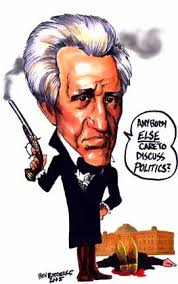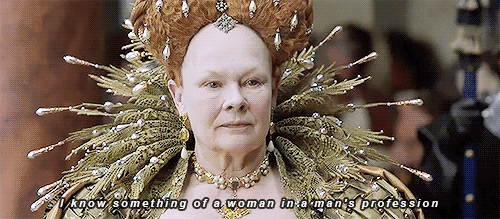Handling Controversial Historical Characters
Tantz_Aerine at April 13, 2019, midnight

image by Ben Burgraff
When writing a historical fiction, it's very likely that you will need to include some actual historical personalities along with your historically-adept yet fictional cast.
Depicting a historical character is hard enough when there's a general consensus among historians and popular belief about who they were, what they did, how they did it and what their personality and general profile was.
It's even harder though when the figure is controversial. The more polarizing and controversial the figure, the harder for the creator to depict them properly. There are several reasons for that- first off, you might be part of a 'side' in the controversy, strongly for or against the figure for his/her deeds. Second off you might only have access to one side's position on the figure, or be pressured very much by pop culture or current events to present a figure in a specific light.
Now, I'm not here to tell you what to do in terms of what you choose to do with a controversial figure you decide to include in your historical fiction. It's your executive decision if you choose to portray them with bias (OR if you choose to highlight an aspect of them, rather than the other). It's your executive decision if you choose to portray them completely unrealistically and like a caricature, too.
Just look at what has been done with Elizabeth I, and all of these narrative works are generally accepted:


Elizabeth I though isn't nearly as controversial as say, Andrew Jackson. First off because any controversy about her died off probably with most of the people she decapitated, and second off because even if there was any controversy, she's too far removed from our current situation.
But Andrew Jackson is having his tomb defaced in this day and age, and people rally to defend and castigate him. And it seems rightly so for he was a slaver and an Indigenous People displacer while also being someone who put the USA on the map in the 'modern' way we consider today and fought with The Bank as a threat to the common good if not properly regulated. At least that's what several articles on him are saying.
If you made the executive decision to depict only one side of the person, then you'll prepare for the flak you're likely to receive from the opposing side.
But if you made the executive decision to depict both sides equally and as historically accurately as possible, you might want to prepare to receive flak from both sides, and some praise from those that are actual history nuts.
Having made the decision, you must also compromise with the fact that it's unlikely you'll manage to do it completely. Personal views and biases always seep through so it's best to go into this task informed of your own position, so that you're ready to tackle it more mindfully.
And then comes the really hard part of separating fact from fiction. The more controversial the figure, the harder it will be to be able to tell what was real and what wasn't, especially in historical periods where black propaganda was peaking or censorship was peaking or both.
My approach in such things is to omit everything that doesn't have at least some good grounds to factual evidence- not hearsay, especially not hearsay in hit pieces or iconographies. If I opt to include information from sources like that I will package it in my story as exactly what it is: hearsay. Not fact.
Facts about the person aside you still will need to give them lines, unless you only have your cast speak of the figure. And this is another tricky situation. Giving them lines means you give them voice, tone, style, attitudes and traits.
Who is Lex Luthor?
This one
Or this one?
Think about how they speak, look and carry themselves. That's the power you'll be wielding over the historical figure in your comic, or novel, or movie.
It's great power so you know what comes with that.
The way I approach it is reading as many primary sources as possible, and if possible transcripts of the figure him/herself talking. Then I commit to recreating the feel and tone of their dialogue as well as how people who saw them and spoke with them felt in their presence, report they carried themselves, and so on.
If due to the controversy the consensus is widely different (which to be honest I rarely find when it comes to the figure's behavioral patterns) then I pick a middle distance from both as the truth is somewhere in the middle usually.
In my opinion, the key to depicting a controversial figure (and any figure at that) is to get people interested in them to go do their own research. If you manage that, then you've succeeded.
What do you think?
Special thanks to our patrons!!

Justnopoint - Banes - Rmccool - Abt Nihil - Phoenixignis - Gunwallace - Cdmalcolm1 - Cresc - Pauleberhardt - Scruff - Dragonaur - Emma Clare - Dylandrawsdraws - Functioncreep - The D Wrek - Mks Monsters - Eustacheus - Dillycomics - Barrycorbett - Sinjinsoku - Smkinoshita


Comments
Please login to comment.
Login or Register${ comment.author }} at
${ comment.author }} at